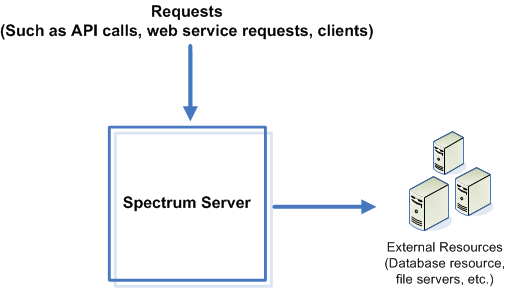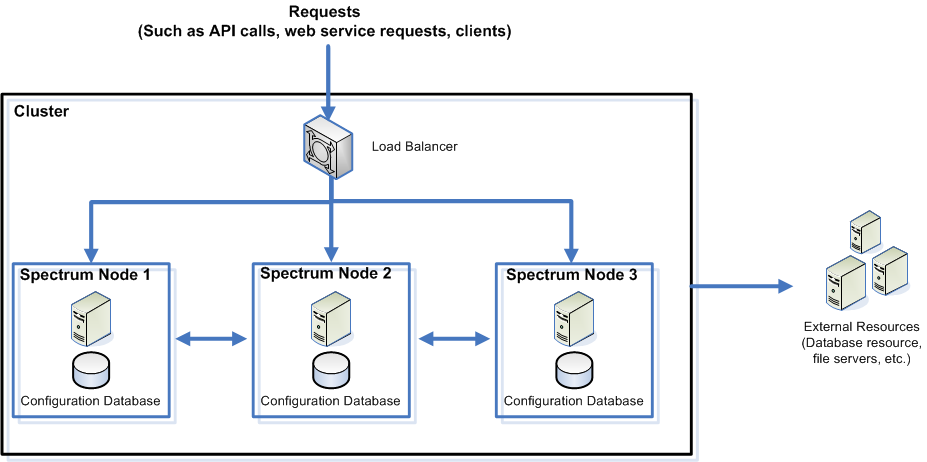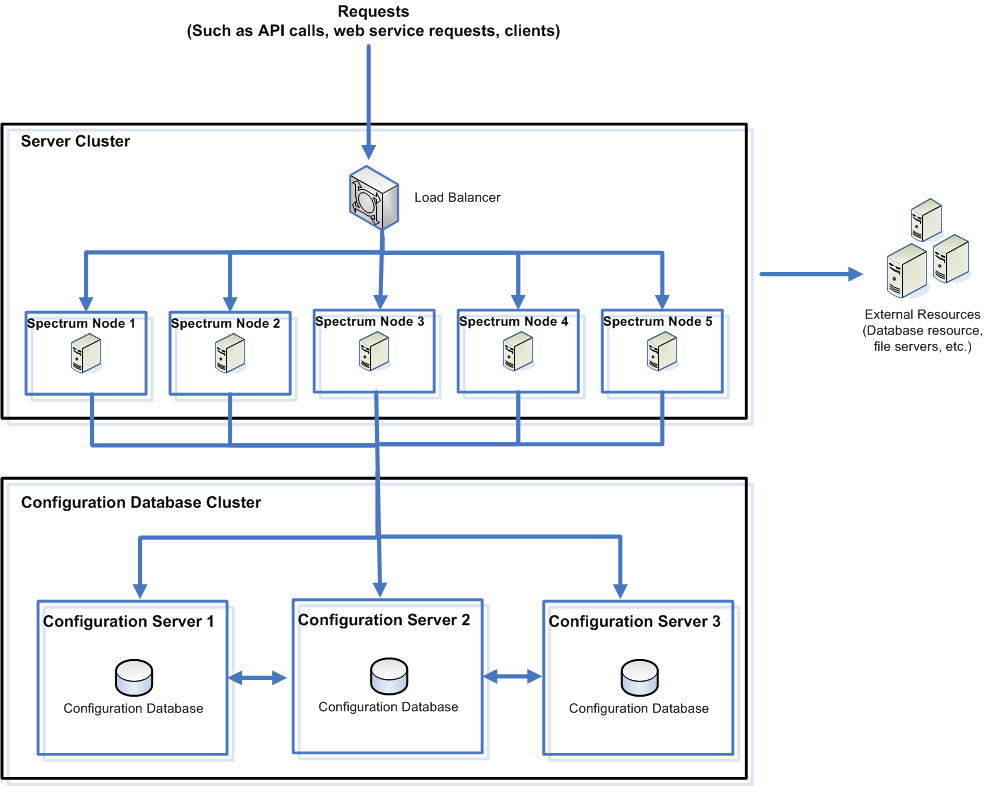Installation Scenarios
Spectrum Technology Platform supports a variety of installation scenarios that scale to fit the needs of your organization.
Standard
The standard scenario is the simplest installation scenario. You install Spectrum Technology Platform on a single server. All activity is handled by this one server, including designing dataflows, storage of configuration information, running jobs, and handling service requests.

Cluster
This diagram illustrates the cluster architecture:

This approach has the following advantages:
- Processing is automatically distributed among the nodes in the cluster for optimal performance.
- Configuration settings are automatically synchronized across nodes.
- Uptime can be improved since if a node goes down the other nodes remain available to handle processing requests.
- Adding a new node is easy.
Cluster with Separated Configuration Database
When you install the Spectrum Technology Platform server you are installing two things: server software and a configuration database. The server handles the execution of jobs and service requests, reporting, and logging. The configuration database stores data such as users and roles, data connections, dataflows, and the audit log.
For clusters consisting of only a few nodes, installing the server and configuration database together on the same server provides acceptable performance. However, a cluster that consists of a large number of nodes may have its performance negatively affected by having a copy of the configuration database on each node. This is because an increasing number of nodes results in increased data replication between nodes during synchronization. Performance may also suffer if users are accessing the configuration database frequently through activities such as editing dataflows or job schedules. These activities require processing power, resulting in less CPU capacity available for running jobs and responding to service requests.
If you have an implementation with four or more nodes, you should consider installing the configuration database to separate servers. This is the most scalable installation scenario because you can add nodes without necessarily adding another instance of the configuration database. For example, say you have five nodes and three configuration database servers. You could add another five nodes, bringing the total number of nodes to 10, while still using just the three configuration databases to support all 10 nodes.
- More CPU is available to the server for running jobs, process flows, and service requests because reading and writing to the configuration database is handled by a separate server.
- Reduced network traffic due to reduced configuration data replicated between nodes. For example, you could have five Spectrum Technology Platform servers for handling execution while having only three repositories. With just three repositories instead of five, data only needs to replicate between three servers rather than five.
- Most scalable installation scenario.
